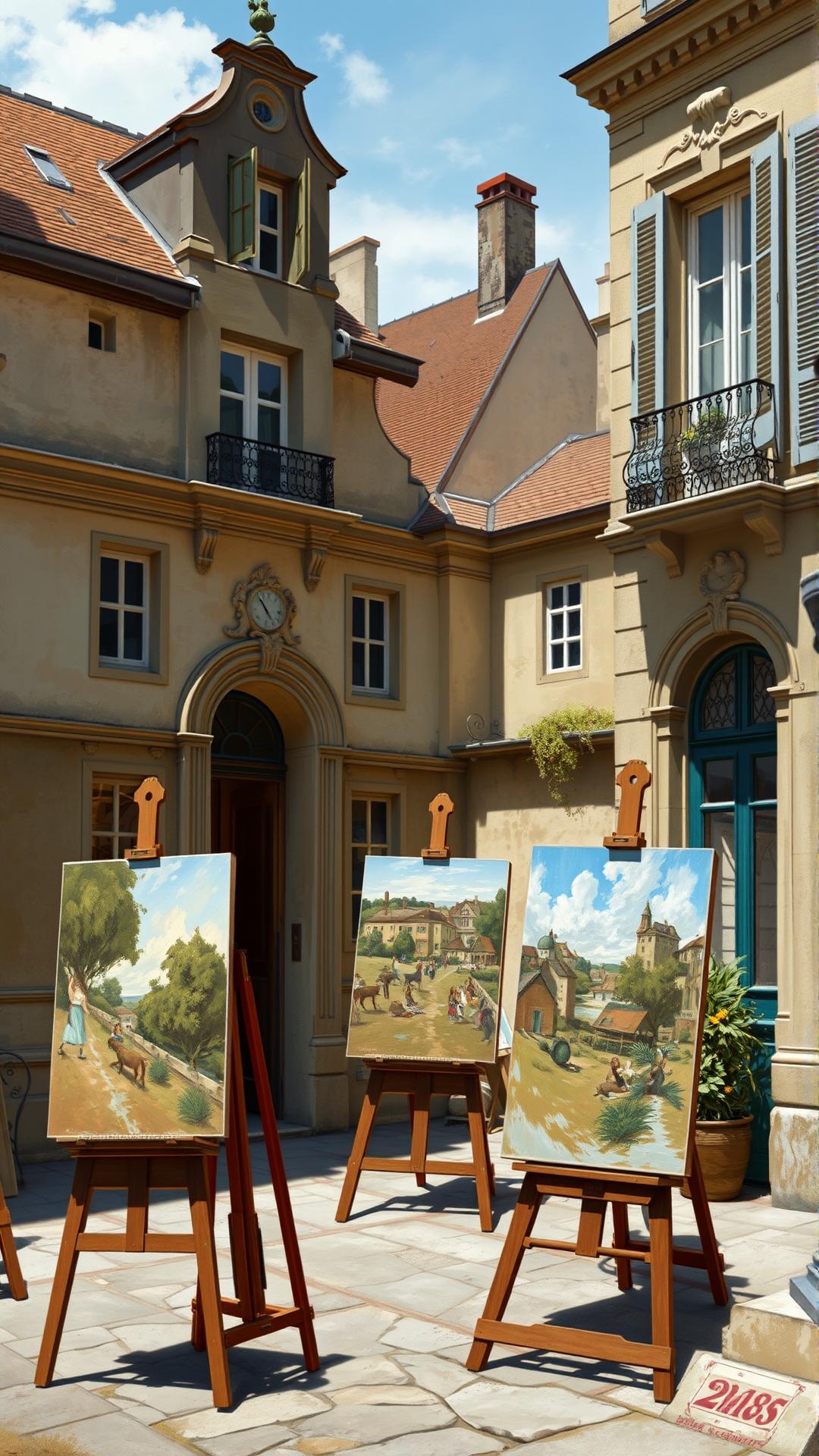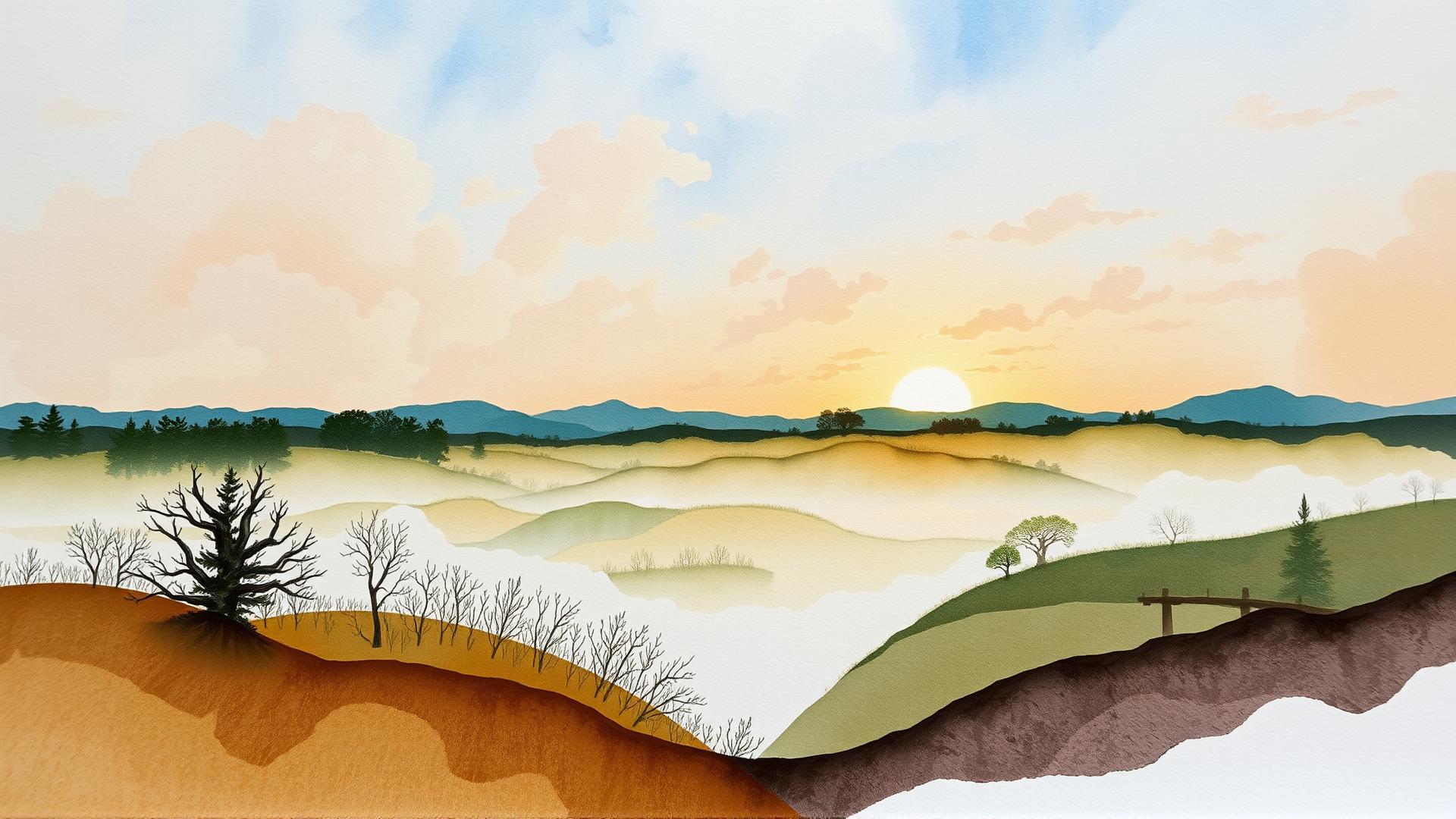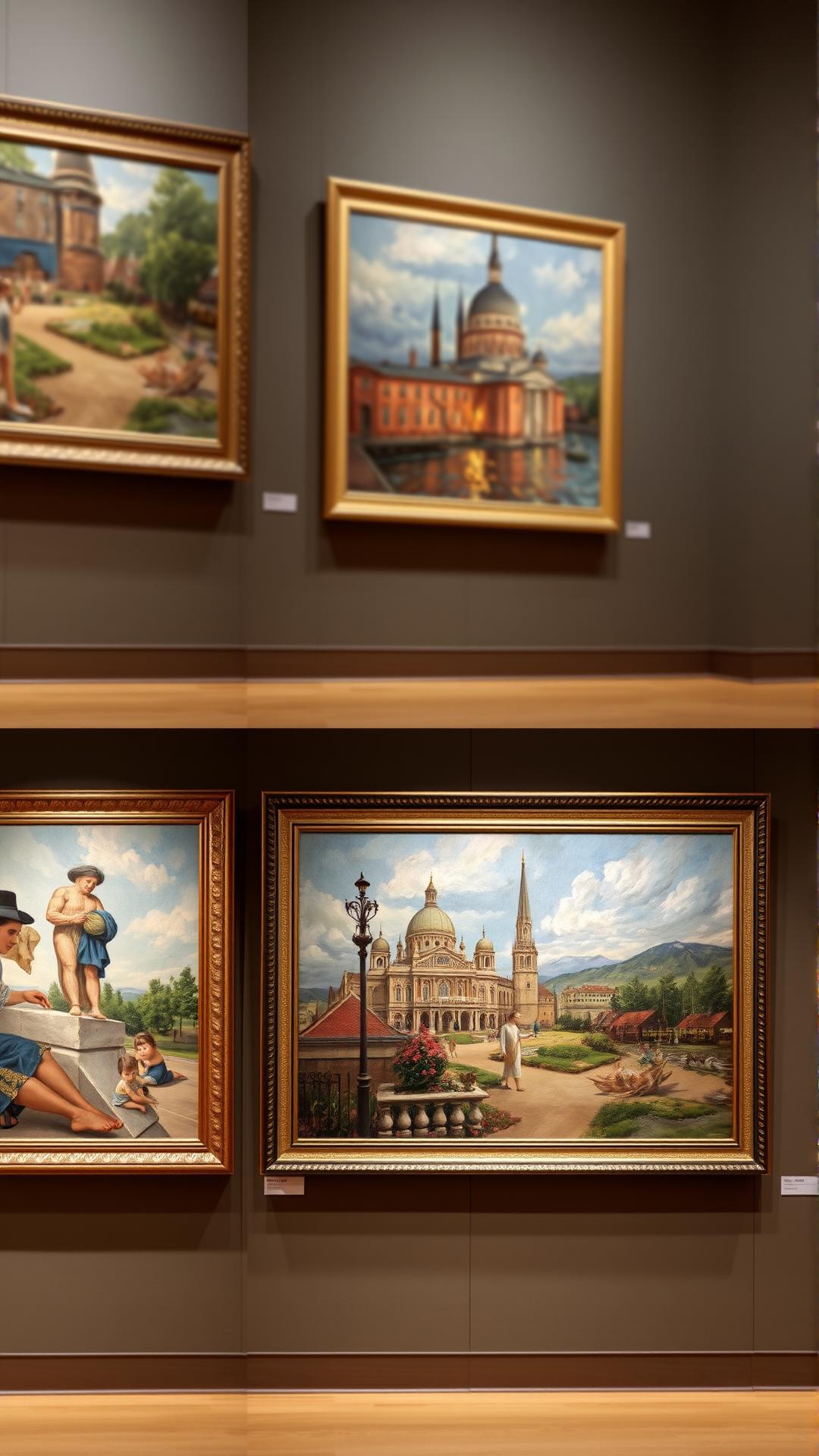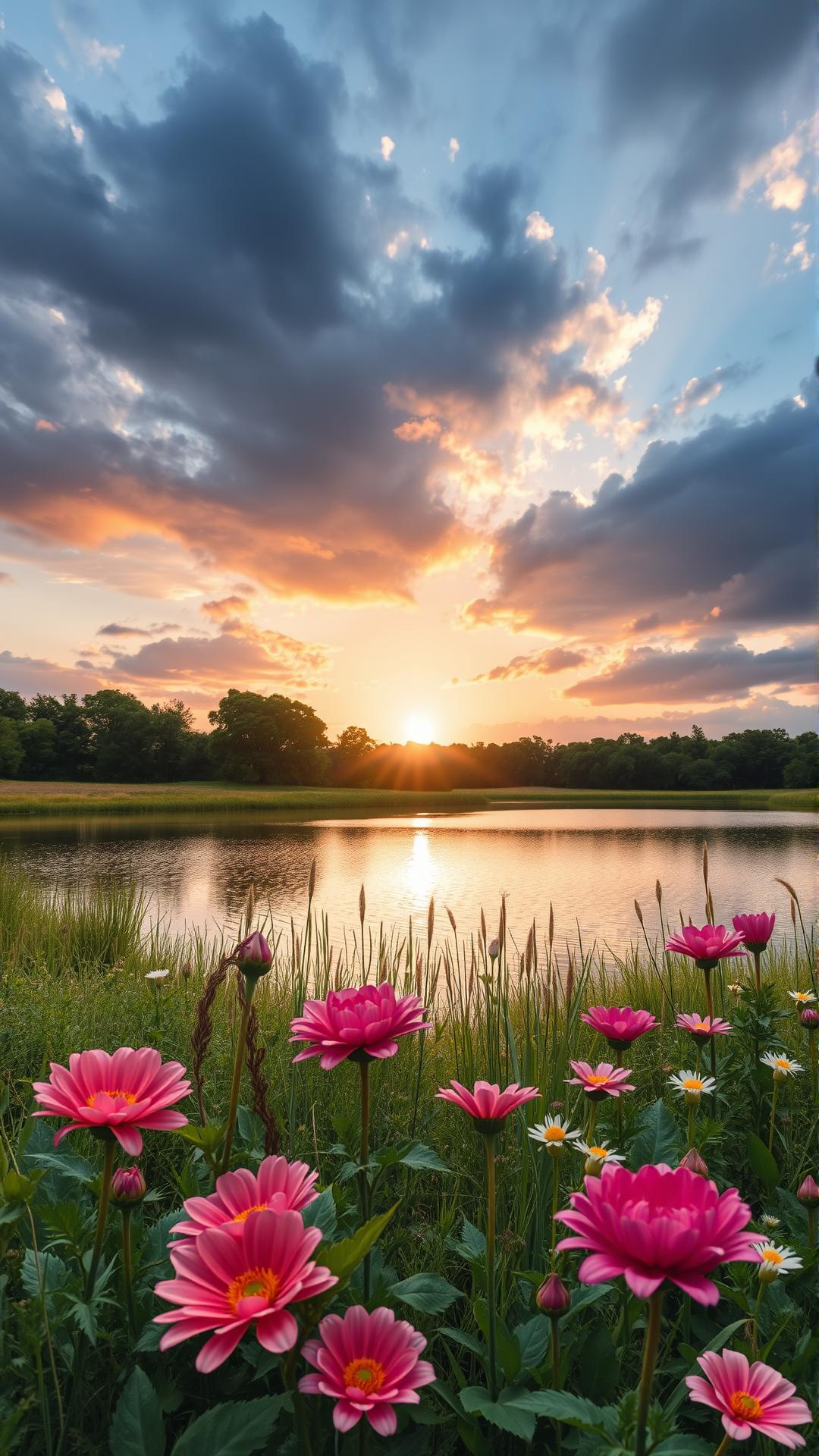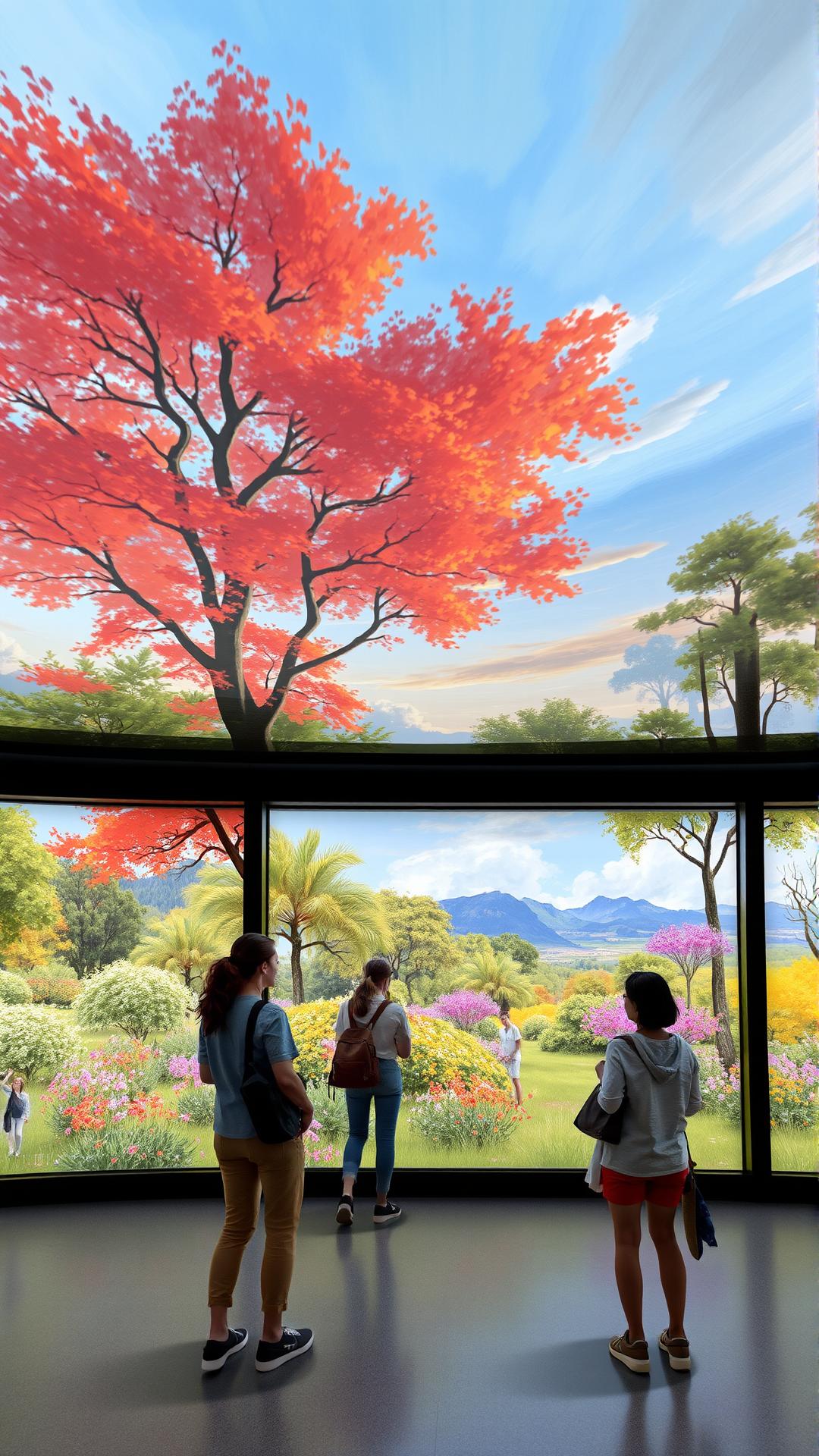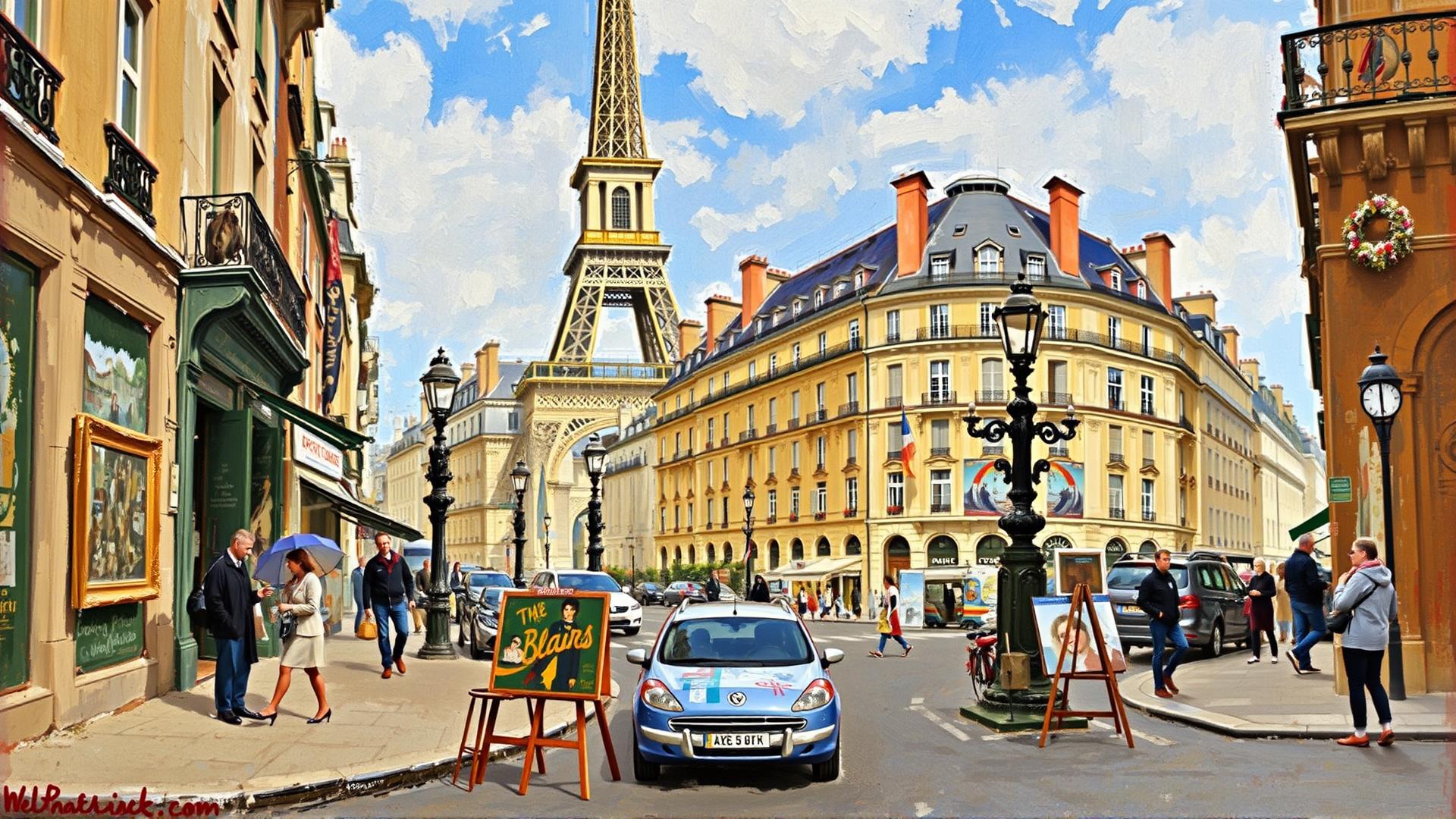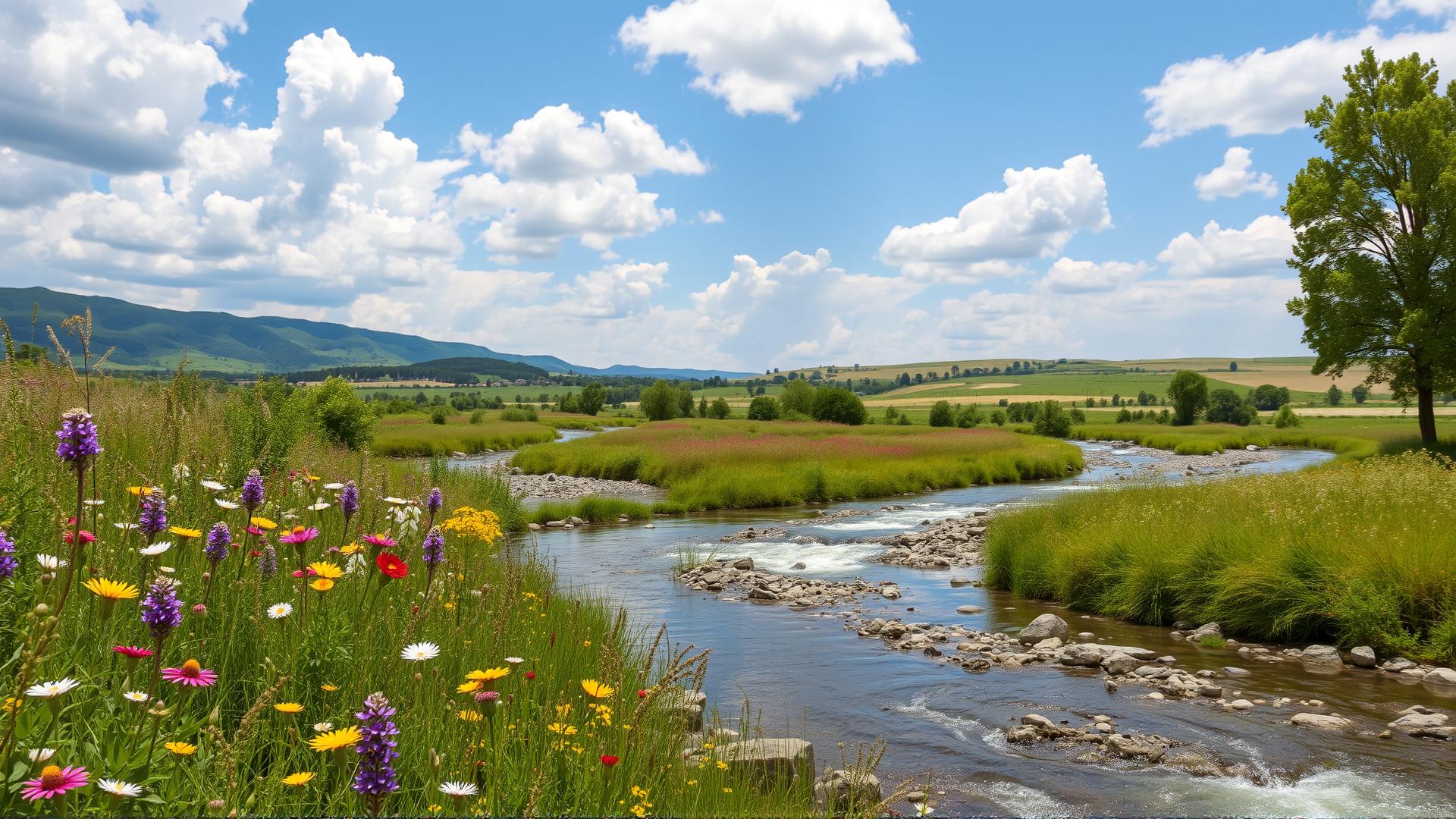
Embracing The Charm Of Classic Paysage Impressionniste
Introduction
The allure of paysage impressionniste, or Impressionist landscapes, lies in their ability to evoke emotion through the expressive use of color and light. This iconic art movement, emerging in 19th-century France, celebrated the beauty of everyday life, bringing a fresh perspective to how we view nature. Renowned artists like Claude Monet and Pierre-Auguste Renoir began to portray ordinary scenes with a focus on transient moments, capturing the essence of the world around them. Their innovative approaches challenged traditional artistic conventions and set the stage for a new wave of artistic expression.
As we explore paysage impressionniste, we delve deeper into the techniques that defined this movement. Impressionist artists utilized visible brush strokes, vibrant colors, and an open composition to express their interpretations of landscapes. This unique combination not only offers viewers a glimpse of nature’s ever-changing qualities but also invites them to engage with the artwork on a personal level. Through this article, we will uncover the elements that contribute to the charm of classic paysage impressionniste, guiding you through its historical significance and lasting influence on the art world.
The Origins of Impressionism
The birth of Impressionism in the late 19th century is a tale deeply interwoven with the societal transformations occurring in France during that era. As the Industrial Revolution took hold, urbanization began to alter the landscape of France, inviting a wave of new ideas and perspectives on art. Artists responded to the rapid changes that reshaped everyday life, and among them were the pioneers of Impressionism who sought to capture the nuances of the world around them.
In the years leading up to the emergence of the Impressionist movement, France was undergoing significant societal shifts. The 1848 Revolution had given rise to new political ideologies, while the burgeoning bourgeoisie class began to exert their influence on culture and society. Traditional modes of life were giving way to modern practices, which profoundly affected the way artists perceived their surroundings. As urban centers expanded and the rural landscape transformed, the Impressionists seized upon the chance to explore new themes in art, primarily focusing on nature and the depiction of light in their work.
The key influencers of Impressionism were instrumental in establishing this movement. Artists like Claude Monet, Camille Pissarro, and Édouard Manet were at the forefront, each bringing unique perspectives that would converge into the hallmark style of Impressionism. Monet’s emphasis on capturing fleeting moments of light and weather, for instance, positioned him as a leader in the exploration of plein air painting. This technique allowed artists to immerse themselves in the environments they portrayed, eschewing the rigid studio confines of previous traditions.
The collective frustration with academic art and its strict conventions also fueled the rise of Impressionism. Artists sought to break free from the constraints of realism, opting instead to depict their impressions of a scene rather than an exact representation. This shift in focus not only reflected their individual artistic journeys but also resonated with a society in flux—a society eager to embrace change yet simultaneously nostalgic for the beauty of untouched landscapes.
In this rich tapestry of historical context, the Impressionists emerged not merely as artists but as pioneers who articulated the essence of their time through art. Their exploration of light and color, combined with a profound respect for nature, created a new dialogue that would resonate through generations, securing the legacy of paysage impressionniste as a captivating and enduring aspect of artistic history.
Distinguishing Characteristics of Paysage Impressionniste
Defining Features of Impressionist Landscapes
As Impressionism emerged, paysage impressionniste carved its unique niche in the broader artistic landscape, visibly different from previous movements such as Romanticism and Realism. The defining features of paysage impressionniste revolve around its revolutionary techniques and stylistic choices, which collectively convey a sense of immediacy and fluidity. This approach marked an exciting departure from the meticulous detail and controlled composition prevalent in older artistic traditions.
One of the most striking characteristics of paysage impressionniste is the use of **short, rapid brush strokes**. This technique captures the ephemeral qualities of light and atmosphere, allowing artists to render landscapes with spontaneity. By applying paint directly onto the canvas without prior sketches, Impressionists created a sense of movement and life in their works, reflecting the transient nature of the scenes they depicted. This contrasts sharply with the smoother, more blended techniques of previous eras, providing a captivating essence of reality as perceived at a fleeting moment.
Color theory played an integral role in paysage impressionniste. Artists employed vibrant palettes, often using **complementary colors** to enhance the luminosity and vibrancy of their landscapes. By juxtaposing colors rather than mixing them on the palette, they achieved a brightness that was revolutionary for the time. This technique not only contributed to the visual appeal of the works but also enhanced the emotional resonance, encapsulating the mood and atmosphere of a particular moment in nature.
Impressionists often chose to paint en plein air, embracing outdoor settings as their studios. This practice allowed artists to closely observe light changes throughout the day, directly influencing their color choices and brushwork. The immediacy of painting in natural light facilitated the creation of landscapes that felt alive and dynamic, appealing to the viewers’ senses and imagination.
The emphasis on depicting everyday scenes in a personal, intimate manner also set paysage impressionniste apart. While earlier movements often idealized or dramatized their subjects, Impressionists showcased the beauty found in the commonplace—fields, rivers, and atmospheric conditions became their canvas. This approach encouraged a new appreciation for the ordinary as an integral part of the human experience.
Key Works and Masterpieces of Paysage Impressionniste
Exploring Landmark Paintings and Their Narratives
Paysage impressionniste encompasses a transformative era in the art of landscape painting, where artists shifted their focus to capturing the transient effects of light and atmosphere. This shift resulted in numerous masterpieces, each encapsulating the spirit of their time and a unique narrative. Highlighting key works from this movement offers insights into both their visual elements and the stories that inspired their creation.
One of the most significant examples is Claude Monet’s “Impression, Sunrise” (1872). This painting is often considered the work that gave Impressionism its name. The striking use of quick brush strokes and a vibrant palette immerses viewers in a fleeting moment at sunrise over the port of Le Havre. The blurred outlines and the interplay of warm and cool colors evoke both the tranquility and the dynamic energy of dawn. Monet’s fascination with light breathes life into the scene, illustrating how perceptions of nature can shift with time and weather.
Equally poignant is Camille Pissarro’s “The Harvest” (1882), which illustrates the rhythm of rural life with a feel of nostalgia. Through a series of dappled colors and lively brush techniques, Pissarro captures the toil of the laborers against a backdrop of ripening fields. The horizontal lines and the variety of hues suggest a peaceful coexistence between humanity and nature, inviting viewers to contemplate their own relationship with the natural world.
Another masterpiece worth noting is Alfred Sisley’s “The Bridge at Villeneuve-la-Garenne” (1872). Here, Sisley utilized shimmering reflections on the water’s surface to convey a sense of serenity. The bridge serves as a conduit between the static elements of the landscape and the lively water below, symbolizing the intertwining of human achievement and nature’s beauty. This work exemplifies the ability of paysage impressionniste to transform commonplace scenes into extraordinary visual narratives.
One cannot overlook the contributions of Pierre-Auguste Renoir with “The Seine at Chatou” (1877). This painting masterfully portrays a leisurely scene infused with the warmth of social engagement. Renoir’s choice of vivid colors and soft brush strokes encapsulates a moment of joy, emphasizing the emotional connection between people and their environment. The leisurely activity reflects the Impressionist belief in seizing the moment, encapsulating the essence of life in a delightful tableau.
These landmark works not only exemplify the artistic techniques defining paysage impressionniste but also carry rich narratives that resonate with viewers, reinforcing the movement’s significance and timeless charm.
The Influence of Paysage Impressionniste
The Enduring Allure of Impressionist Landscapes
Paysage impressionniste, characterized by its emphasis on the transient effects of light and atmosphere, has laid the groundwork for numerous movements in contemporary art. Its influence permeates modern landscape painting, evident in the works of artists who pay homage to the style while infusing their unique perspectives. The hallmark techniques of brushwork, color, and composition pioneered by the Impressionists resonate strongly with two-dimensional and three-dimensional artists today, drawing inspiration from nature’s ephemeral beauty.
Modern artists often utilize vibrant palettes reminiscent of the Impressionist era to capture fleeting moments in their surroundings. Much like Claude Monet’s depictions of water lilies and light-dappled landscapes, contemporary creators strive to evoke emotion through color and movement. The Impressionists’ technique of applying paint in quick, expressive strokes allows for a lively interaction between the artwork and its viewers, becoming a significant element in current artistic practices. This dynamism serves not only to portray nature but invites the audience to experience the subject matter on a sensory level, which has become increasingly important in today’s artistic expressions.
Among the various genres within contemporary art, landscape painting has particularly adopted the ethos of paysage impressionniste. Artists today often study the interplay of light and shadow, exploring themes such as climate change and urban development, while referring back to the aesthetics of Impressionism. The connection between Impressionist techniques and present-day landscape art can be seen in the revisitation of familiar themes as artists engage in a dialogue with nature, while also addressing contemporary issues. The influence of Impressionism becomes not a replication but rather a reimagining that incorporates modern materials and contexts.
The communal aspects of the Impressionist movement carry on in today’s artist collectives and exhibitions. Collaborative outdoor painting sessions, akin to the Impressionists’ plein air practices, bring artists together in a shared engagement with their natural surroundings. Such environments facilitate artistic exchange and stimulate creativity, mirroring the camaraderie that characterized the original Impressionist gatherings. Thus, the spirit of paysage impressionniste continues to provide a platform for today’s artists, nurturing a blend of tradition and innovation within the landscape genre.
The Enduring Legacy of Paysage Impressionniste
The Lasting Impact of Impressionist Landscapes
The picturesque allure of paysage impressionniste continues to resonate within the art world today, serving as a poignant reminder of a transformative era in artistic expression. The essence of Impressionism lies in its ability to capture fleeting moments of light and color in nature, rendering landscapes with an emotional depth that transcends mere representation. This legacy is palpable in contemporary art forms, where artists often draw inspiration from the Impressionist movement’s innovative techniques and philosophies.
One of the most notable aspects of paysage impressionniste is its embodiment of spontaneity. Artists like Claude Monet and Camille Pissarro embraced technique over meticulous detail, prioritizing the feeling of a scene rather than a photographic accuracy. This philosophy has profoundly influenced modern art practices, as many creators opt for gestures and emotions rather than hyperrealistic portrayals. Think of artists today who weave Impressionist traits into their work, using bold brushstrokes and vibrant color palettes to invoke the ambiance of the natural world. Their interpretations remind us that art should engage the senses, eliciting memories and mood rather than just visual observation.
The relevance of paysage impressionniste further extends into the realm of environmental art. In a time when nature is often under threat from urbanization and climate change, the Impressionist tradition inspires artists to advocate for preservation through their work. By depicting the sublime beauty of landscapes, they revive the public’s connection to the natural world, urging awareness and appreciation. Art installations and projects that echo these sentiments not only honor the tradition of the past but also serve as platforms for environmental consciousness, bridging the gap between aesthetic beauty and ecological responsibility.
The enduring charm of landscape impressionism can be seen in the world of digital art and photography, where the principles of capturing light and atmosphere are still paramount. Contemporary creators utilize these techniques to manipulate digital tools in ways that echo the sensibilities of Impressionist painters. By embracing this symbiotic relationship between history and modern technology, they breathe new life into the landscape genre, ensuring that the spirit of paysage impressionniste remains relevant and vibrant in today’s cultural dialogue.
Experiencing Impressionist Landscapes The Allure of Paysage Impressionniste
Immersing in Landscapes That Inspire
The enchanting world of paysage impressionniste invites individuals to lose themselves in a rich tapestry of color, light, and emotion. To fully appreciate these classic landscapes, one must actively engage with the environment that inspired these masterpieces. This journey can take many forms—whether through travel to historic sites significant to Impressionism or savoring a day spent under the open sky with a canvas in hand. Each interaction, whether physical or intellectual, serves to deepen appreciation and understanding.
Traveling to regions where Impressionist artists thrived, such as Normandy, Paris, and the French countryside, one can witness firsthand the delicate nuances that captivated van Gogh, Monet, and Cézanne. These locations, imbued with a vibrant atmosphere, provide an ideal backdrop to behold the transformative power of light, shadow, and the subtleties of seasonal changes. Walking along the banks of the Seine or exploring the fields of Giverny can ignite a sense of connection with the artists’ past experiences, enhancing your appreciation of their work.
Art Appreciation as an Immersive Experience
Aside from physical travel, immersing oneself in the aesthetic of paysage impressionniste can occur through various forms of art appreciation. Visiting art galleries and museums hosting Impressionist exhibitions can reveal deeper insights into the techniques and inspirations behind the works. Engaging in discussions with knowledgeable guides or participating in lectures might illuminate the socio-cultural context that shaped the movement, enhancing your connection to the art.
As you contemplate the interplay between nature and the artist’s brush, consider taking the time to replicate or reinterpret a favorite Impressionist landscape. Set up your easel in a serene spot that reminds you of Monet’s garden or a picturesque Henri Rousseau jungle scene. Through painting, you will not only channel the traditional methods employed by these artists but also experience the sheer joy of exploration and creativity that was at the heart of their endeavors.
Embracing the charm of classic paysage impressionniste is not solely about passive observation; it is an active encounter with a tradition that encourages both personal expression and communal discovery. By immersing yourself in the landscapes inspired by these iconic artists, you will cultivate a rich, lasting connection to a pivotal and transformative art movement that continues to resonate through the decades.
Conclusions
The charm of classique paysage impressionniste stems from its ability to depict the ephemeral beauty of nature through innovative techniques and refreshing perspectives. The movement’s emphasis on capturing light and atmosphere, paired with its focus on everyday life, gifted the art world with an enduring legacy that continues to inspire artists and audiences alike today. The works of Impressionist masters have transcended time, showcasing not just landscapes, but also the emotions tied to these fleeting moments.
As we reflect on the impact of paysage impressionniste, it is evident that this movement represents a significant shift in the art world. By embracing spontaneity and the beauty of the ordinary, Impressionists laid the groundwork for future artistic endeavors. Their work serves as a powerful reminder to appreciate the simple yet profound moments in our own lives—much like the scenes depicted in their breathtaking landscapes.


